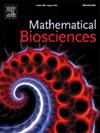从流行病学数据估计时变的恢复率和死亡率:一种新方法。
IF 1.8
4区 数学
Q2 BIOLOGY
引用次数: 0
摘要
各种传染病的恢复时间或死亡时间因人而异,受人口统计学差异、免疫强度、病史、年龄、已有疾病和感染严重程度等因素的影响。为了捕捉这些变化,依赖于感染时间的康复率和死亡率提供了对流行病的详细描述。然而,获得个人层面的数据来估计这些比率具有挑战性,而总体流行病学数据(如新感染人数、活跃病例人数、新康复人数和新死亡人数)更容易获得。在本文中,提出了一种新的方法来估计感染后依赖于时间的恢复和死亡率,使用易于获得的数据源,适应反映现实世界报告实践的不规则数据收集时间。使用Nadaraya-Watson估计器来计算新感染的数量。该模型提高了流行病进展描述的准确性,并为恢复和死亡分布提供了清晰的见解。使用COVID-19数据验证了所提出的方法,并通过将其应用于麻疹和伤寒等其他一些疾病来证明其普遍适用性。本文章由计算机程序翻译,如有差异,请以英文原文为准。
Estimation of time-varying recovery and death rates from epidemiological data: A new approach
The time-to-recovery or time-to-death for various infectious diseases can vary significantly among individuals, influenced by several factors such as demographic differences, immune strength, medical history, age, pre-existing conditions, and infection severity. To capture these variations, time-since-infection dependent recovery and death rates offer a detailed description of the epidemic. However, obtaining individual-level data to estimate these rates is challenging, while aggregate epidemiological data (such as the number of new infections, number of active cases, number of new recoveries, and number of new deaths) are more readily available. In this article, a new methodology is proposed to estimate time-since-infection dependent recovery and death rates using easily available data sources, accommodating irregular data collection timings reflective of real-world reporting practices. The Nadaraya–Watson estimator is utilized to derive the number of new infections. This model improves the accuracy of epidemic progression descriptions and provides clear insights into recovery and death distributions. The proposed methodology is validated using COVID-19 data and its general applicability is demonstrated by applying it to some other diseases like measles and typhoid.
求助全文
通过发布文献求助,成功后即可免费获取论文全文。
去求助
来源期刊

Mathematical Biosciences
生物-生物学
CiteScore
7.50
自引率
2.30%
发文量
67
审稿时长
18 days
期刊介绍:
Mathematical Biosciences publishes work providing new concepts or new understanding of biological systems using mathematical models, or methodological articles likely to find application to multiple biological systems. Papers are expected to present a major research finding of broad significance for the biological sciences, or mathematical biology. Mathematical Biosciences welcomes original research articles, letters, reviews and perspectives.
 求助内容:
求助内容: 应助结果提醒方式:
应助结果提醒方式:


